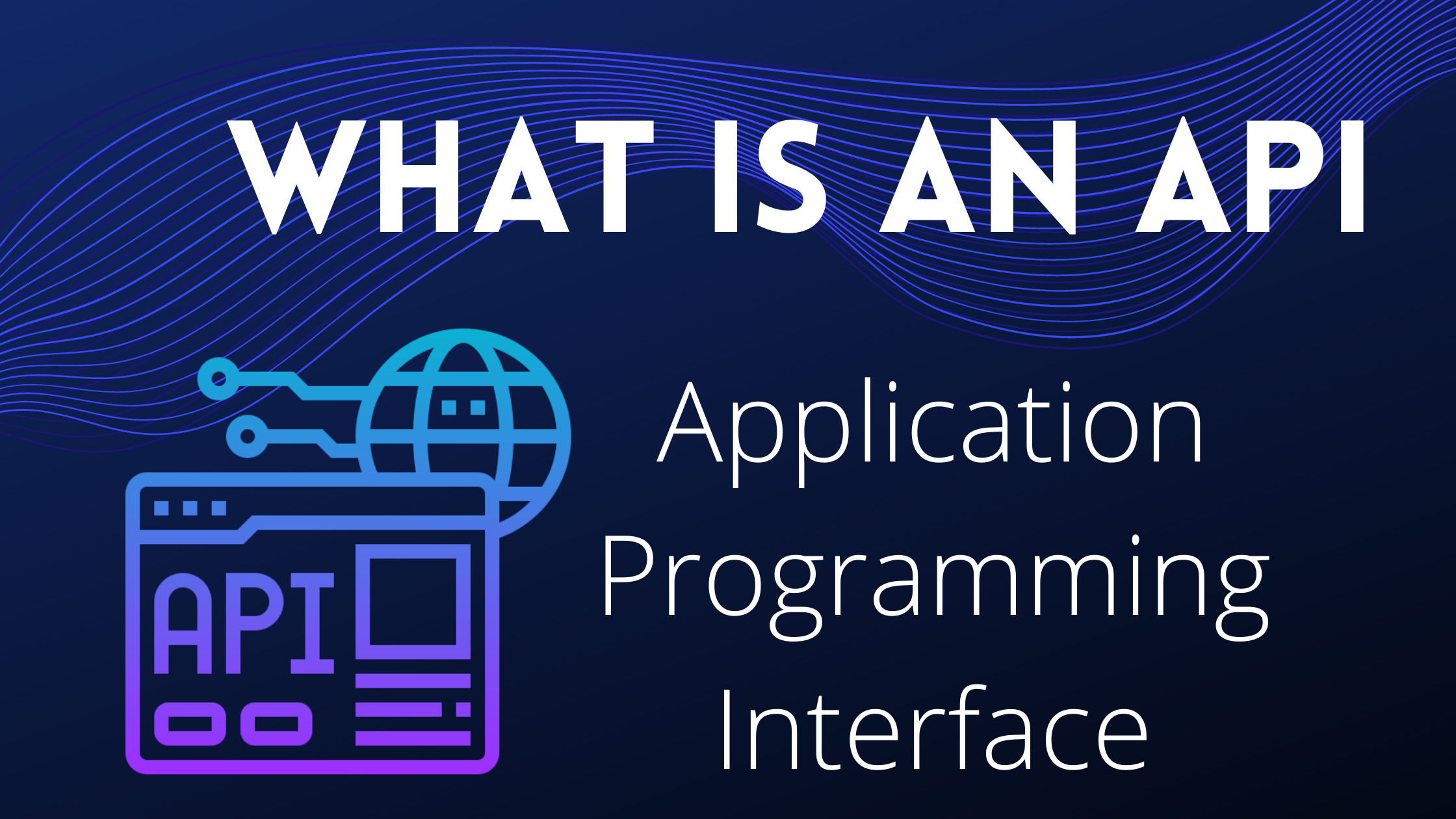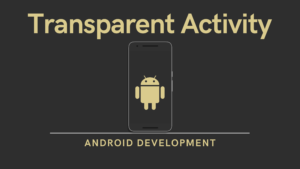API stands for Application Programming Interface, and it is a software intermediary that allows two applications to communicate with one another. An API is used every time you use an app on your phone, such as News Applications, to send an instant message, or check the news or weather.
Contents
How does API work?
An API is a messenger that sends your request to the provider you’re requesting it from and then returns the response to you.

What is the purpose of API?
Allow your product or service to interact with other products and services without knowing how they are implemented. This can help to simplify app development while also saving time and money.
API Explanation with Real-life Example
An API, in principle, allows two software programs to communicate with one another. To gain access to the data or functionality of another program, one program can call the API of another program.
Consider the following non-technical example to better understand how an API works. A waiter will take your order and report it to the kitchen when you go to a restaurant. The kitchen prepares your food, and the waiter delivers it to your table.
In this example, one program represents you (the person ordering food), and the other program represents the kitchen. The waiter is a representation of the API, which is used to receive requests and return results. In this case, the waiter returns your order, whereas an actual API would return data or other useful information.
Application Programming Interface (API) Looks like:

Types of API –
There are four types of API that are commonly used in web-based applications:-public, private, partner, and composite.

1: Public API –
- APIs that are available to the public. A public API is open to the public and can be used by any outside developer or business. A company that develops and offers a public API will have a business strategy that includes sharing its applications and data with other companies.
- Authentication and authorization for public APIs are typically moderate. An enterprise may also try to monetize the API by charging a fee per call to use the public API.
2: Private API –
- APIs for internal use An internal (or private) API is only intended for use within the enterprise to connect systems and data. Private APIs, for example, could connect an organization’s payroll and HR systems.
- Private APIs have traditionally had weak security and authentication – or none at all – because they are intended for internal use, and such security levels are assumed to be in place via other policies. This is changing, however, as increased threat awareness and regulatory compliance requirements have a greater impact on an organization’s API strategy.
3: Partner API –
- A partner API is a way to facilitate business-to-business activities that are only available to specifically selected and authorized outside developers or API consumers. For example, if a company wants to selectively share customer data with third-party CRM firms, a partner APIs can connect the internal customer data system with those third-party parties, no other API use is permitted.
- Partners have specific rights and licenses to such APIs. As a result, partner APIs typically include stronger authentication, authorization, and security mechanisms. Enterprises do not typically monetize such APIs directly; rather, partners are compensated for their services rather than through API usage.
4: Composite API –
- In general, composite APIs combine two or more APIs to create a sequence of related or interdependent operations. Composite APIs can be useful for addressing complex or closely related APIs behaviors, and they can sometimes outperform individual APIs in terms of speed and performance.
What is Remote API?
Remote APIs are intended to communicate via a communications network. The term “remote” refers to the fact that the resources being manipulated by the API are located somewhere other than the computer making the request. Because the internet is the most widely used communication network, most APIs are built using web standards. Although not all remote APIs are web APIs, it is reasonable to assume that web APIs are remote.
Web APIs typically use HTTP for request messages and provide a structured definition for response messages. These responses are typically in the form of an XML or JSON file. Both XML and JSON are preferred formats because they present data in a way that other applications can easily manipulate.
API architectures and protocols
APIs exchange commands and data, which necessitates clear protocols and architectures – the rules, structures, and constraints that govern the operation of an API. Today, APIs protocols or architectures are classified into three types: REST, RPC, and SOAP. These are referred to as “formats,” and each has its own set of characteristics and tradeoffs, as well as being used for different purposes.
1: REST = REST (Representational State Transfer)
2: RPC = RPC (Remote Procedure Call)
3: SOAP = SOAP (Simple Object Access Protocol)
| REST | RPC | SOAP |
|---|---|---|
| The representational state transfer (REST) architecture is perhaps the most widely used approach for developing APIs. REST is based on a client/server model that separates the front and back ends of the API and allows for a great deal of flexibility in development and implementation. REST is “stateless,” which means that the API does not store any data or status between requests. Caching is supported by REST, which stores responses for slow or non-time-sensitive APIs. REST APIs, also known as “RESTful APIs,” can communicate directly or via intermediary systems such as API gateways and load balancers. | RPC. The remote procedure call (RPC) protocol is a straightforward method for sending and receiving multiple parameters. RPC APIs execute executable actions or processes, whereas REST APIs primarily exchange data or resources like documents. RPC can use two different languages for coding: JSON and XML; these APIs are known as JSON-RPC and XML-RPC, respectively. | SOAP is a messaging standard defined by the World Wide Web Consortium that is widely used to create web APIs, typically with XML. SOAP supports a wide range of internet communication protocols, including HTTP, SMTP, and TCP. SOAP is additionally extensible and style-independent, allowing developers to write down SOAP APIs in a sort of way while easily adding features and functionality. The SOAP approach specifies how the SOAP message is processed, the features and modules that are included, the communication protocol(s) that are supported, and the SOAP message construction. |
A remarkably brief history of APIs
APIs first appeared in computing history, long before the personal computer. An API was typically used as a library for operating systems at the time. Although it occasionally passed messages between mainframes, the APIs were almost always local to the systems on which it operated. APIs finally broke free from their confines after nearly 30 years. By the early 2000s, they had established themselves as an important technology for data integration over long distances.
What is an API call?
Now that you know what an API is and what it does, you’re probably wondering what an API call is. Simply put, an API call occurs whenever you make a call to a server via APIs. For example, whenever you log in or ask a question on your computer or an app, you are making an API call.
Still don’t understand what I’m saying? Assume you’ve just downloaded an app. Before you can use it, you must enter your email address or password. You have made an API call the moment you press the “enter” button to submit your information.
What is an API key?
- An APIs key, also known as an application programming interface key, is a code that computer programs use to communicate with one another. When the program or application identifies its user, developer, or calling program to a website, it uses the APIs or application programming interface to identify itself.
- As a result of this, application programming keys are used to track and control how the interface is being accessed. To prevent abuse or malicious use of the APIs in question, it does this frequently.
Using API keys: When and Why
- With projects, you’ll use APIs keys, while with users, you’ll be using authentication codes. In many cases, Cloud Endpoints will handle both authentication procedures and APIs keys. The main difference between the two is that:
- As the name suggests, authentication tokens are used to identify users or the people who are accessing a website or application.
- Using APIs keys, you can identify the project that is making the request. If it’s a website or an application, it’s called the API.
Project Authorization Is Ensured by APIs
- The first step in choosing the best authentication scheme is to understand what authentication and API keys can do. Using the keys, you’ll be able to:
- Project authorization—To determine if the application making the call has permission to make the call to the project in question. Checks whether the API in this project is activated, as well. Identify the project or application that is making the API call.
- The APIs keys are not as secure as the authentication tokens. This information is useful in identifying the project or application behind the call, however.
When a call is made, a key is generated on the project’s side. Using an iOS or Android application, for example, allows you to easily limit their use to certain environments. Use an IP range to limit access. - A project’s APIs key can be used to associate usage information with a given project because it can identify the caller’s project. This allows ESP (Extensible Service Proxy) to reject requests from projects that do not have access to the API.
User Authentication:
- Authentication schemes are intended to serve two primary functions:
- User authorization—determine whether the user making the call is authorized to make this type of request.
User authentication—confirm that the person making the call is the person he or she is claiming to be. - The goal of an authentication scheme is to allow the caller’s identity to be determined. An endpoint can also use the authentication token to confirm that permission to call the APIs has been granted. The APIs server gets to make the final decision on whether to authorize that specific request based on the information available on the authentication token.
What exactly is API testing?
API is the middle layer between the presentation (UI) and the database layers in the development of software applications (apps). APIs allow communication and data exchange between software systems.
APIs testing is a type of software testing that examines APIs directly, from functionality to reliability to performance to security. APIs testing, as part of integration testing, validates the logic of the build architecture in a short period of time.
Important takeaways
- APIs are widely used tools for accelerating your business.
- APIs enable fast connections and product shopping, such as booking a hotel or ordering a movie ticket.
- APIs provide critical insights into real-time analytics delivery options.
- APIs enable developers to obtain information by making an API call or “request.”
Some Common Examples of Application Programming Interface(API)
- Weather Snippets are an example of an API that we use in our daily lives. Google uses APIs to display relevant data based on user search queries
- Any Payment gateway, Travel Booking, News Application, and so on.
Conclusion:-
APIs are designed to perform a specific function, such as enabling communication between applications. APIs have become a necessary component of application development. They make it possible for developers to quickly integrate specific functionality into their applications or website. If you want to know more about Application Programming Interface.




Pingback: What is a Retrofit? | Introduction to Retrofit - Developers Dome
Pingback: GET request using retrofit in Android Tutorial - Developers Dome